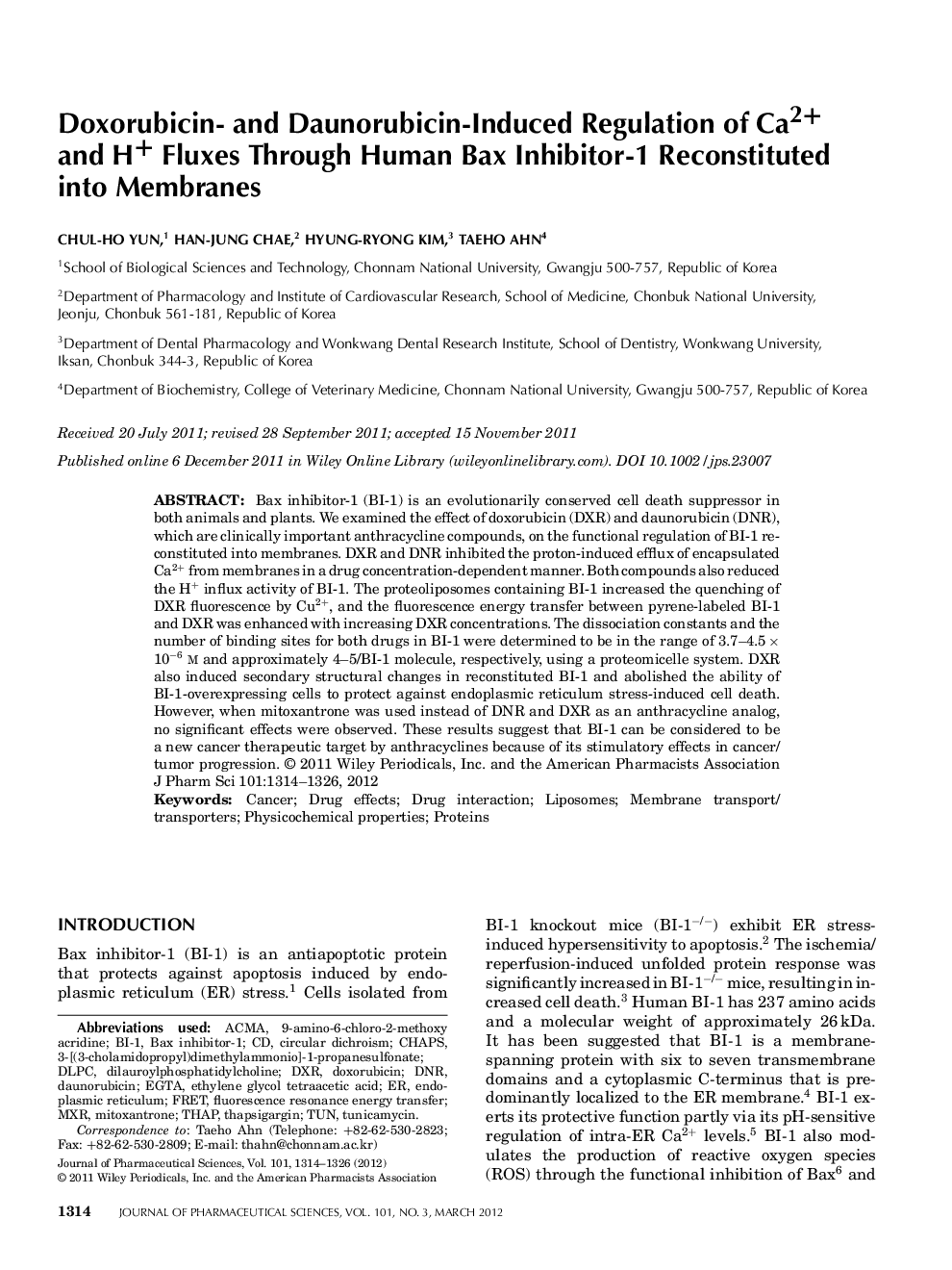| Article ID | Journal | Published Year | Pages | File Type |
|---|---|---|---|---|
| 2486015 | Journal of Pharmaceutical Sciences | 2012 | 13 Pages |
Abstract
Bax inhibitor-1 (BI-1) is an evolutionarily conserved cell death suppressor in both animals and plants. We examined the effect of doxorubicin (DXR) and daunorubicin (DNR), which are clinically important anthracycline compounds, on the functional regulation of BI-1 reconstituted into membranes. DXR and DNR inhibited the proton-induced efflux of encapsulated Ca2+ from membranes in a drug concentration-dependent manner. Both compounds also reduced the H+ influx activity of BI-1. The proteoliposomes containing BI-1 increased the quenching of DXR fluorescence by Cu2+, and the fluorescence energy transfer between pyrene-labeled BI-1 and DXR was enhanced with increasing DXR concentrations. The dissociation constants and the number of binding sites for both drugs in BI-1 were determined to be in the range of 3.7-4.5Â Ã 10â6m and approximately 4-5/BI-1 molecule, respectively, using a proteomicelle system. DXR also induced secondary structural changes in reconstituted BI-1 and abolished the ability of BI-1-overexpressing cells to protect against endoplasmic reticulum stress-induced cell death. However, when mitoxantrone was used instead of DNR and DXR as an anthracycline analog, no significant effects were observed. These results suggest that BI-1 can be considered to be a new cancer therapeutic target by anthracyclines because of its stimulatory effects in cancer/tumor progression.
Keywords
Related Topics
Health Sciences
Pharmacology, Toxicology and Pharmaceutical Science
Drug Discovery
Authors
Chul-ho Yun, Han-jung Chae, Hyung-ryong Kim, Taeho Ahn,
